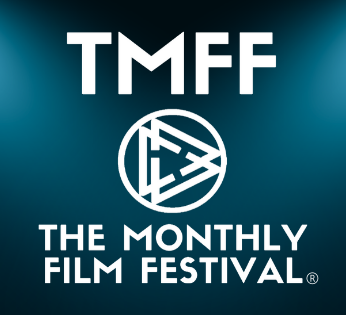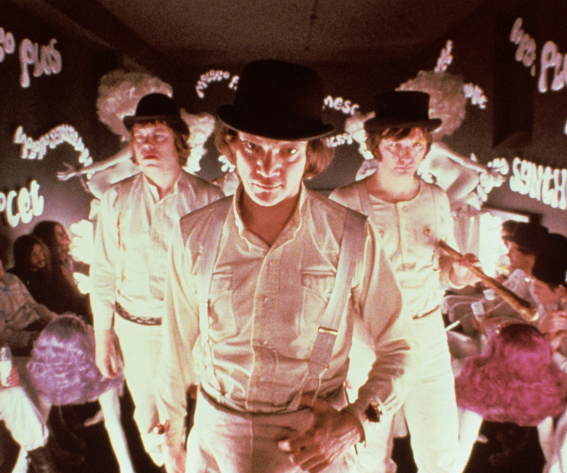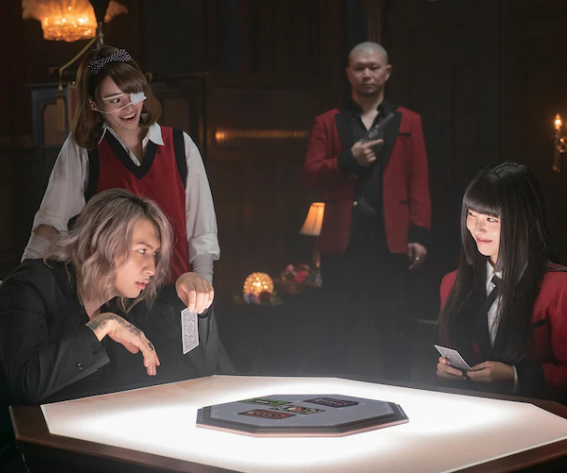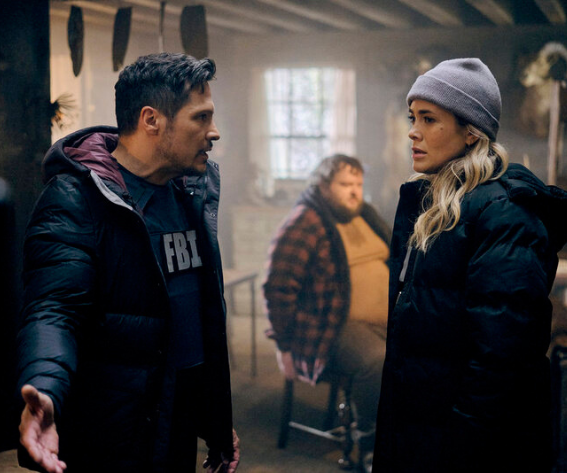Cinema has long been a space for artistic expression, cultural critique, and storytelling that pushes boundaries. However, some films go so far in their themes, visuals, or messages that they become lightning rods for controversy. Whether banned, censored, or condemned by critics and audiences alike, these films have sparked intense debates while cementing their place in cinematic history.
Here are ten of the most controversial films of all time, each with a unique impact on filmmaking, culture, and public discourse.
1. A Clockwork Orange (1971)
- Director: Stanley Kubrick
- Country: United Kingdom
- Genre: Dystopian, Crime, Psychological Thriller
- Controversy: Extreme violence, disturbing psychological themes, alleged inspiration for real-life crimes
Stanley Kubrick’s A Clockwork Orange is a dystopian nightmare, following Alex DeLarge, a charismatic yet violent gang leader, as he commits horrifying acts before undergoing a controversial rehabilitation process. The film’s portrayal of ultraviolence, sexual assault, and psychological conditioning shocked audiences. Many critics accused Kubrick of glorifying crime and desensitizing viewers to violence, while reports surfaced of real-life crimes being linked to the film.
The backlash was so severe that Kubrick himself withdrew the movie from circulation in the UK for nearly three decades. Despite this, A Clockwork Orange remains a bold critique of government overreach, free will, and the ethics of rehabilitation. Its striking visual style and philosophical themes continue to influence filmmakers and provoke discussion. Much like how cinema challenges societal norms, industries like online gaming have also evolved, offering secure and immersive experiences for users. Platforms like Slotozen Casino Login provide a seamless and engaging environment for players, adapting to modern technological advancements just as films like A Clockwork Orange pushed artistic boundaries.
2. The Exorcist (1973)
- Director: William Friedkin
- Country: USA
- Genre: Horror, Supernatural
- Controversy: Religious blasphemy, disturbing imagery, extreme audience reactions
When The Exorcist premiered, it was unlike anything audiences had ever seen. Inspired by true events, it follows a young girl possessed by a demonic entity, forcing two priests to confront supernatural evil. The film’s graphic depictions of demonic possession, blasphemous language, and intense horror sequences caused mass hysteria.
Reports of audience members fainting, vomiting, and even suffering nervous breakdowns during screenings only added to its notoriety. Many religious groups condemned the film as sacrilegious, claiming it promoted Satanism. Despite the controversy, The Exorcist became one of the most influential horror films of all time, proving that cinema could evoke deep psychological terror while exploring themes of faith, fear, and human vulnerability.
3. The Passion of the Christ (2004)
- Director: Mel Gibson
- Country: USA
- Genre: Religious Drama
- Controversy: Extreme violence, accusations of anti-Semitism
Mel Gibson’s The Passion of the Christ is a visceral and unrelenting depiction of the final hours of Jesus Christ’s life. While many praised the film for its dedication to biblical detail, others criticized its graphic violence and relentless brutality, questioning whether it was necessary or exploitative. The film was also accused of anti-Semitic undertones, with some arguing that it unfairly portrayed Jewish leaders as villains.
Despite the backlash, the movie was a massive box office success, especially among Christian audiences. It remains one of the highest-grossing R-rated films in history and is still debated for its intensity, religious significance, and the fine line between artistic representation and excessive brutality.
4. Natural Born Killers (1994)
- Director: Oliver Stone
- Country: USA
- Genre: Crime, Satire, Action
- Controversy: Graphic violence, accusations of glorifying mass murder
Few films have generated as much moral outrage as Oliver Stone’s Natural Born Killers. The story follows Mickey and Mallory Knox, a couple who embark on a brutal killing spree while being glorified by the media. With its hyper-stylized violence, chaotic editing, and satirical look at the media’s obsession with crime, the film was accused of promoting violence and inspiring real-life crimes.
Multiple lawsuits were filed against the filmmakers after copycat murders were allegedly linked to the film. However, Stone defended his work as a critique of the media’s role in turning criminals into celebrities. The film remains a darkly prophetic examination of how modern media feeds off sensationalized violence, making it more relevant than ever in the age of viral news and social media.
5. Last Tango in Paris (1972)
- Director: Bernardo Bertolucci
- Country: France, Italy
- Genre: Erotic Drama
- Controversy: Explicit sexual content, allegations of abuse on set
Bernardo Bertolucci’s Last Tango in Paris follows a deeply troubled American widower (Marlon Brando) who engages in an emotionally and physically intense affair with a young woman. The film was immediately controversial for its raw and graphic sexual content, leading to bans and censorship worldwide. However, the controversy deepened decades later when actress Maria Schneider revealed that she had not been fully informed about certain scenes, including the infamous “butter scene.”
The revelation led to accusations of on-set abuse, lack of consent, and exploitation, turning Last Tango in Paris into a case study in the ongoing conversation about ethics in filmmaking and the treatment of actors. Despite its beautiful cinematography and psychological depth, its legacy remains tainted by the allegations.
6. Salò, or the 120 Days of Sodom (1975)
- Director: Pier Paolo Pasolini
- Country: Italy
- Genre: Horror, Drama
- Controversy: Extreme violence, sexual abuse, sadism
Few films have been as universally condemned as Salò, or the 120 Days of Sodom. Inspired by the writings of the Marquis de Sade, the film depicts a fascist dystopia where a group of elites kidnap, torture, and degrade young captives for their amusement. Its unrelenting brutality, depiction of sexual violence, and themes of power and corruption led to immediate bans in multiple countries.
Even today, Salò is difficult to watch and remains one of the most disturbing films ever made. However, its uncompromising critique of totalitarianism and human depravity ensures that it remains a significant—if deeply unsettling—piece of cinema history.
7. Cannibal Holocaust (1980)
- Director: Ruggero Deodato
- Country: Italy
- Genre: Horror, Exploitation
- Controversy: Real animal cruelty, extreme violence, simulated snuff film accusations
Arguably the most infamous “found footage” horror film, Cannibal Holocaust was so realistic that its director was arrested on obscenity charges, with authorities believing he had made a real snuff film. The film’s depiction of rape, torture, and actual on-screen animal killings sparked global outrage and bans.
While it remains controversial, Cannibal Holocaust is credited with inspiring the found footage genre and serves as a harsh critique of media exploitation and colonialism—though many still question whether its message justifies its disturbing content.
8. The Texas Chainsaw Massacre (1974)
- Director: Tobe Hooper
- Country: USA
- Genre: Horror, Slasher
- Controversy: Extreme violence, disturbing realism, psychological impact on audiences
Tobe Hooper’s The Texas Chainsaw Massacre is often regarded as one of the most terrifying horror films ever made. Loosely inspired by real-life serial killer Ed Gein, the film follows a group of young travelers who fall victim to a family of deranged cannibals, led by the infamous Leatherface. The gritty, documentary-style cinematography and relentless brutality made it feel shockingly real, unsettling audiences around the world.
Upon release, the film was banned in multiple countries due to its intense violence and disturbing imagery, despite actually showing very little explicit gore. Many critics accused it of being too sadistic and psychologically scarring, but over time, it gained recognition as a groundbreaking piece of horror cinema. It set the blueprint for the slasher genre, influencing countless films that followed.
9. Pink Flamingos (1972)
- Director: John Waters
- Country: USA
- Genre: Exploitation, Comedy
- Controversy: Shock value, explicit content, transgressive themes
John Waters’ Pink Flamingos is one of the most infamous examples of shock cinema, deliberately designed to break taboos and push boundaries. Starring drag queen Divine, the film follows a bizarre underground competition for the title of “the filthiest person alive.” What follows is a series of grotesque, explicit, and deliberately offensive scenes, including acts of depravity that remain shocking even by today’s standards.
Critics were outraged by its vulgarity, calling it nothing more than a collection of sick stunts meant to disgust audiences. Yet, Pink Flamingos has since become a cult classic, celebrated for its punk-rock approach to filmmaking, rejection of censorship, and its role in LGBTQ+ cinema. John Waters remains an icon of transgressive art, and his film still challenges ideas of what cinema can and should be.
10. Irreversible (2002)
- Director: Gaspar Noé
- Country: France
- Genre: Psychological Thriller, Drama
- Controversy: Brutal violence, prolonged sexual assault scene, nonlinear storytelling
Gaspar Noé’s Irreversible is one of the most disturbing films ever made, structured in reverse chronological order, showing the consequences of brutal violence before revealing its cause. The film is notorious for its nine-minute uncut sexual assault scene, which many critics and audiences found unbearable.
The film was met with walkouts, protests, and bans due to its extreme content, with many arguing that it went too far in depicting violence. However, others defended it as a raw and unflinching look at revenge, trauma, and the fragility of life. Noé’s unique storytelling technique and dizzying camerawork further enhance the film’s sense of chaos and horror, making it a deeply unsettling but unforgettable cinematic experience.
Conclusion
Controversial films have always challenged audiences, pushing boundaries in art, ethics, and storytelling. While they may shock and divide, they often leave a lasting impact, forcing viewers to question societal norms and personal values. Many of these once-condemned films are now seen as groundbreaking, proving that cinema’s role is not just to entertain, but also to provoke and inspire. As storytelling evolves, controversial films will continue to shape the future of filmmaking.









Leave a reply